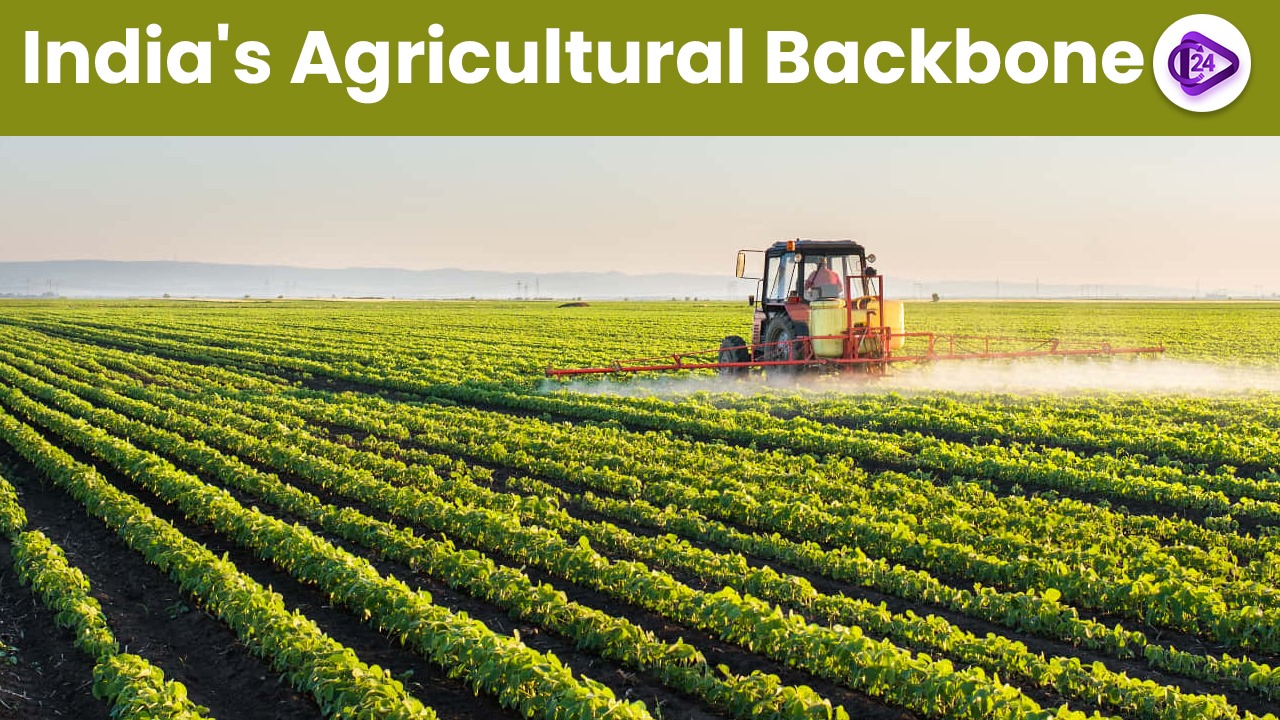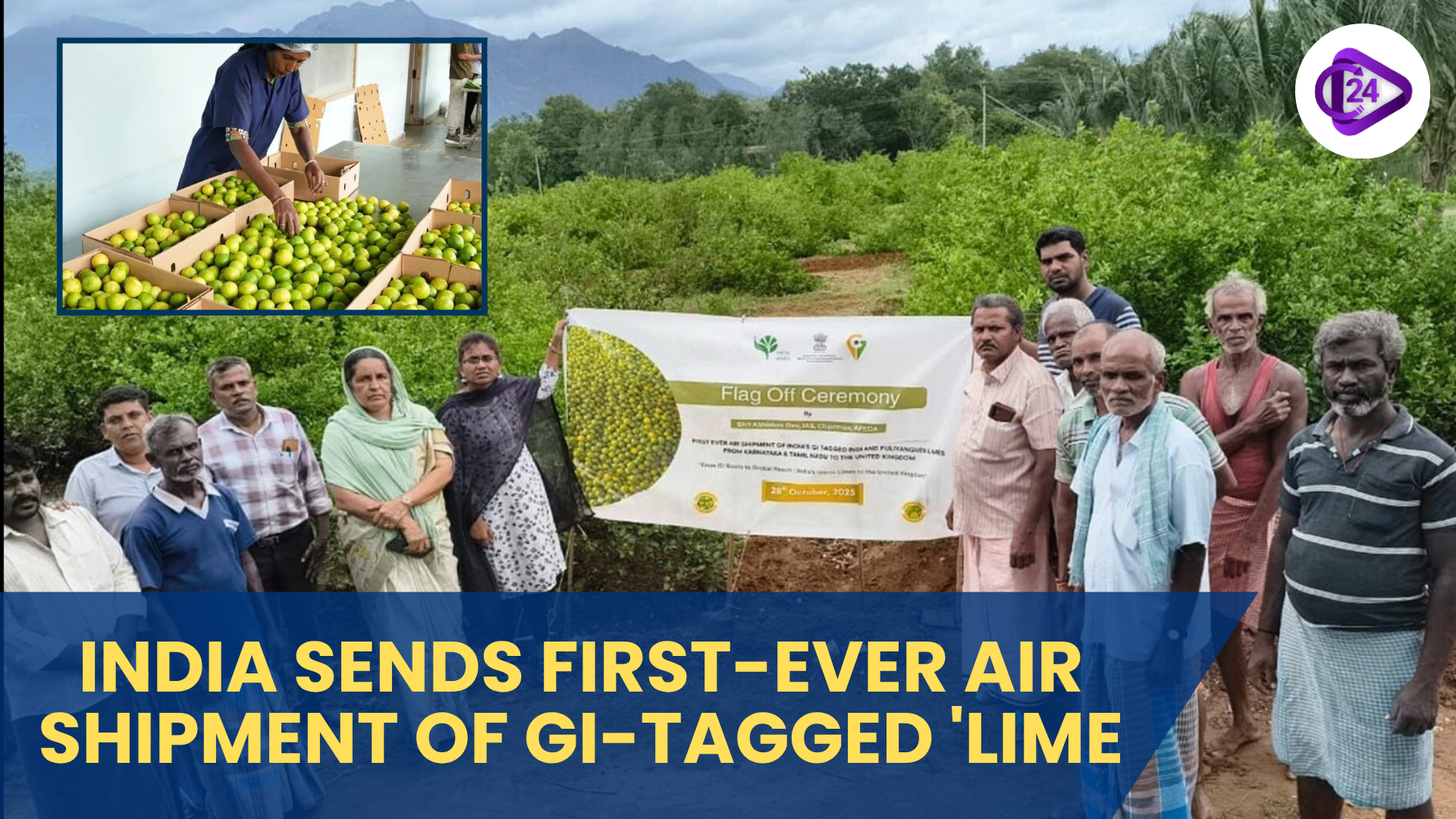
The budgetary spending for agriculture in India expanded dramatically from ₹11,915 crore in 2008-09 to ₹1,22,528 crore in 2024-25. Food grain production numbers increased by 63 percent between 2004-05 and 2023-24 where production started at 204.6 million tonnes and reached 332.3 million tonnes. The monetary value of Minimum Support Price has experienced major increases specifically for paddy and wheat crops thus providing greater advantages to farmers. The combination of the PM-KISAN program with PMFBY and the Agricultural Infrastructure Fund (AIF) strengthens farmer income security and creates better infrastructure support. The combination of attention to millet production and improved credit availability together with e-NAM-based digital marketplace integration positions India for worldwide leadership in agricultural production.
About the Agriculture sector in India
-
The economy of India heavily depends on the agriculture sector which secures food supplies while providing employment opportunities leading to general economic advancement.
-
The Indian government substantially raised public funding and implemented programs that focus on farmers to support agricultural development.
Enhanced Budget Allocation
-
The agricultural budget received substantial increases from ₹11,915.22 crore in 2008-09 until it reached a figure of ₹1,22,528.77 crore in 2024-25 while demonstrating government support for agriculture.
Increased Foodgrain Production
-
The quantity of food grains increased in amounts that began at 204.6 million tonnes in 2004-05 and then reached an estimated 332.3 million tonnes in 2023-24.
-
The region dedicated to foodgrain cultivation expanded from 120.2 million hectares in 2004-05 to reach 132.1 million hectares in 2023-24.
Real Gross Value Added (GVA)
-
The agricultural sector added ₹26.42 lakh crore of Real GVA during 2004-05 to 2023-24 as its economic impact grew stronger.
Increase in Agricultural Productivity
-
The production output of vital crops rose substantially during this period:
-
Rice yield: 19.29% growth
-
Wheat yield: 13.16% growth
-
Maize yield: 25.22% growth
-
Foodgrain Procurement
-
During the 2004-14 period, farmers procured a total of 4590 LMT paddy which rose to 6900 LMT throughout the 2014-24 period.
-
Wheat procurement rose from 2140 LMT (2004-14) to 3072 LMT (2014-23).
Minimum Support Price (MSP) Enhancements
-
The paddy price under the minimum support price scheme increased from ₹850 per quintal in 2008-09 to ₹2,300 per quintal in 2023-24.
-
The MSP for wheat saw a remarkable growth from its initial value of ₹1,080 per quintal in the year 2008-09 to reach ₹2,425 per quintal during 2023-24.
-
The significant expansion of MSP benefits for wheat and paddy ensured farmers achieved enhanced economic steadiness.
Programs of Government for Agriculture
-
Income Support Through PM-KISAN
-
PM-KISAN established in 2019 delivered ₹3.46 lakh crore through 18 payments to more than 11 crore farmers.
-
-
Pradhan Mantri Kisan Maandhan Yojana (PMKMY)
-
More than 24.67 lakh small and marginal farmers have taken part in PMKMY to obtain ₹3,000 monthly pension benefits under this scheme when they reach age 60.
-
-
Pradhan Mantri Fasal Bima Yojana (PMFBY)
-
The Pradhan Mantri Fasal Bima Yojana paid farmers ₹1.65 lakh crores in claims that generated ₹508 for every ₹100 premium they paid.
-
-
Institutional Credit for Agriculture
-
Kisan Credit Cards (KCCs) rose from 1,285.37 lakh in 2012-13 to 1,895.81 lakh by March 2019.
-
The total amount of institutional credit dedicated to the agriculture sector increased from ₹8.5 lakh crore in 2014-15 to reach ₹25.48 lakh crore during 2023-24.
-
-
e-NAM
-
e-NAM now integrates 1,410 markets which allows 1.79 crore farmers and 2.63 lakh traders to access market opportunities.
-
-
Agricultural Infrastructure Fund (AIF)
-
AIF has approved projects totaling 87,548 with funding of ₹52,738 crore to build post-harvest management infrastructure.
-
Millets: Superfood of India
-
The production of Millets increased to 175.72 lakh tonnes in 2023-24 while productivity showed a 7% growth during the period from 2019 to 2024.
-
The partnership between ICAR and 25 seed hubs resulted in the creation of these facilities that increased millet seed production possibilities.
Conclusion
-
The Government's strategic effort to boost agricultural output while raising minimum selling prices providing funding and opening new market opportunities has completely reshaped Indian agriculture.
-
The agricultural sector develops using PM-KISAN, PMFBY and AIF programs which help establish India as a leading global agricultural force.



 India’s GI-Tagged Limes Reach UK in Landmark Agricultural Export Milestone
India’s GI-Tagged Limes Reach UK in Landmark Agricultural Export Milestone






